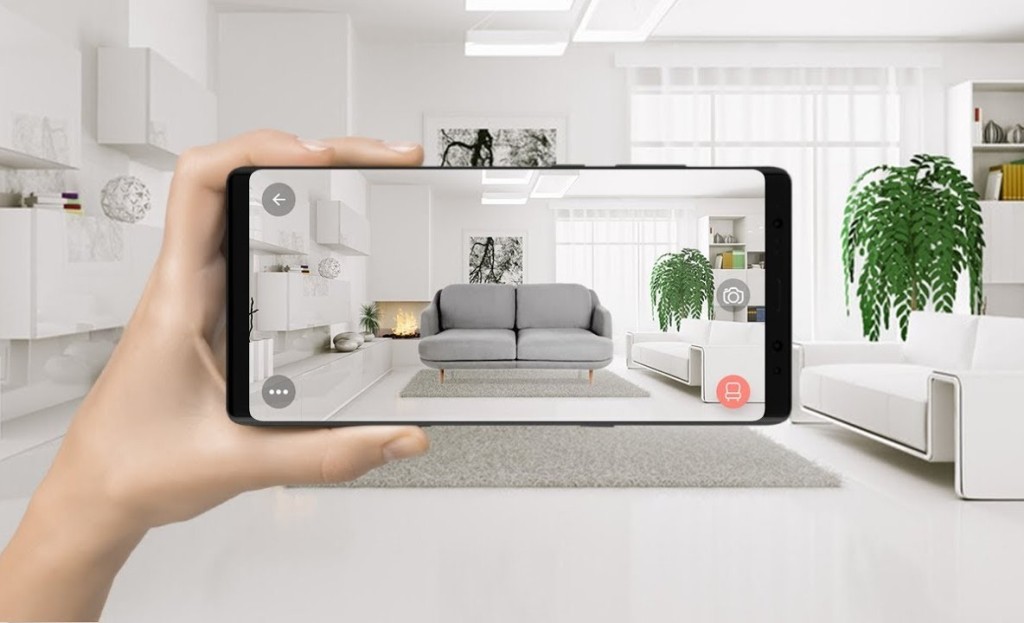If you want to know how Augmented Reality can be used for interior designing and home decor, then this article will help you with the same.
Many people have always wanted to build their dream home. A person or family chooses to build their dream house after saving money, making plans, and working hard for years. Interior design is a big and growing business. In the US alone, people spend more than $550 each on furniture and home decor every year.
But as we’ll see, AR is giving both customers and creators new ways to get people’s attention and give them more power. Therefore, today with the help of this article we are going to show you how using Augmented Reality software has become an asset for the interior designing and home decor industry.
AR Technology in Interior Designing and Home Decor
Below we have shared several points, which will cover the effects of AR in this industry.
How to Implement AR in Home Decor?
Through the use of computer-generated sensory input like text, sound, and graphics, augmented reality improves upon the user’s perception of their immediate physical surroundings.
Accurate visual representations of furniture and floor plans in the actual environment are the main focus of AR applications in home decoration and interior design.
Augmented Reality gives you access to more data about your surroundings through its own medium, be it an app or a game. Taking a picture of a statue can also trigger an audible response, such as revealing the statue’s identity, origin, or dimensions.
That’s why the prospect of using augmented reality in the realm of interior design and home decoration is so exciting.
Advantages of AR In Interior Desing And Home Decor
Below are some benefits of using this technology for home decor.
1. Visualization
The use of augmented reality in the home design process has widened its appeal. Whether you’re just starting out as an interior designer, already have some experience in the field, or want to build a house from scratch, augmented reality can help you see how the finished product will look.
Using AR interior design software, it is simple to construct 2D floor designs that render nicely in 3D. More than 2,500 items and 2,000 building materials are at your disposal, allowing you to create an incredible level of realism in your virtual home.
2. Easy to Share
Augmented reality’s strength lies in its social nature, which sets it apart from virtual reality. You can rest assured that you won’t be the only one who wants a say in the matter when it comes to picking out new furniture for the house.
Family members of all ages can have a hand in making final decisions with the use of augmented reality apps for decorating the home. Using these programs, you can “arrange” furniture in a room virtually.
3. Customer Loyalty
Customers are typically confident in their purchases because they have had the opportunity to both analyze the product’s attributes and see it “exists” before making a final decision. Consumers’ purchasing decisions become more deliberate and well-balanced, and they take less time to make.
As a result, they are able to increase contentment and dependability through their efforts. Profit for businesses is typical, and the rate at which customers buy from them again is on the rise.
4. Profitability
Due to the benefits of hands-on experience, many shoppers choose to do their shopping in physical locations. The chance to produce output using an augmented reality tool is a similar opportunity. In addition, this technology piques the interest of shoppers who are already comfortable with making their purchases online.
5. Design Editing Abilities
Users will also have the option to make revisions to designs at any level of development. Users can avoid the time-consuming process of making adjustments to their physical furnishings and decor.
6. Better Collaboration
Interior designers can benefit from augmented reality by working more closely with building architects and their clients. When the architect, designer, and client work together more effectively, superior design solutions emerge.
7. Better Guidance
Using augmented reality, a user can provide optimal direction to an interior designer. Augmented reality allows for the interactive communication of even the smallest design-related details.
Wrapping Up
Although AR technology has only just emerged and is still evolving, businesses can reap the benefits of utilizing its features when advertising a mobile app or website.
We hope through this article you have gotten a clearer view of how Augmented Reality can affect the interior desing and home decor industry.
Moreover, if you want to add something to this write-up, then share it in the comments section below.
You may also like
-
Hiring An Architect To Design Your Home
-
Winter is Coming: A Kansas Building Manager’s Guide to Preventing Frozen Pipes with Commercial Plumbing Services in Kansas
-
How to Install an Artificial Hedge Easily
-
Get Exclusive Diwali Offers on Whirlpool Double Door Refrigerators
-
Who is Best Pipe and Joint System Supplier in Malaysia

